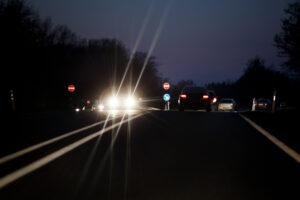
LED headlamps draw attention over safety concerns
By onMarket Trends | Technology
Automotive safety professionals are weighing in on how to mitigate LED headlight glare after a mainstream news article drew attention to the issue.
A recently published Newsweek article delved into the issue of modern headlamps, saying that while they have “been hailed for their sleek appearance,” they’re also causing concern among some who worry about glare and safety implications.
“It’s an assault,” John Pizzuta, a Brooklyn resident, told the outlet. “It seems to be getting worse and worse.
“Now headlights are as bright as spotlights and it’s magnified because it’s not the occasional car or SUV, but it’s so popular you get it coming at you and coming from behind. It’s almost like your vision is impaired.”
Pizzuto was among more than 52,000 people as of Wednesday afternoon who signed a Soft Lights Foundation petition to ban the lights. The Soft Lights Foundation said on its website that LED lights cause a number of problems, including that the light density is not regulated.
“Because LEDs emit a directed beam of energy, the light does not disperse gently over distance,” the foundation said. “Even from far away, you are getting hit with extremely intense light.”
Last year, the National Highway Traffic Safety Administration (NHTSA) issued a final rule that allows OEMs to install adaptive driving beam (ADB) headlights on new vehicles to increase visibility and reduce headlight glare.
NHTSA ruled that ADBs will improve safety for pedestrians and bicyclists by making them more visible at night and will help prevent crashes by better illuminating animals and objects in and along the road, according to the final rule.
However, NHTSA states in the rule that the amount of glare, “has not established, and does not know of, a quantified relationship between glare dosage and crash risk.”
NHTSA did not respond to Repairer Driven News queries by publication deadline to comment on whether any regulations are in place to curb the use of LED lights, or other solutions in place to mitigate the issue.
The Insurance Institute for Highway Safety (IIHS) told RDN that there are federal regulations in place that set parameters for visibility and glare.IIHS has campaigned for better headlights since 2016, when it launched its headlight rating program. It has made high-quality headlights a requirement for its Top Safety Pick and Top Safety Pick+ awards, giving manufacturers an incentive to make better headlights available on more vehicles.
In January, General Motors (GM) received a federal patent for a “smart glass” invention that can dim the glare of headlines from oncoming vehicles.
Initially filed in July 2022, the GM Global Technology Operations patent lays out how the automaker seeks to minimize the effects of excessive glare while driving.
The technology works by detecting at least one remote vehicle within a certain distance from a driver. If the oncoming light is brighter than a pre-determined threshold, the smart glass dims at least a portion of the driver’s windshield. It uses an eye tracker to determine the location of the driver’s eyes.
According to Newsweek’s sources, LED headlight glare can be attributed to three factors: headlight aim, illegal aftermarket conversion kits, and larger vehicles such as pickup trucks or SUVs.
Matt Brumbelow, a senior IIHS research engineer, told Newsweek that federal lighting requirements don’t take into consideration the headlight’s height.
“If you put the same headlight up high on a pickup versus down low on a small car, it’s going to create more glare. None of that is controlled for,” Brumbelow said.
Images
Featured image courtesy of ollo/iStock
